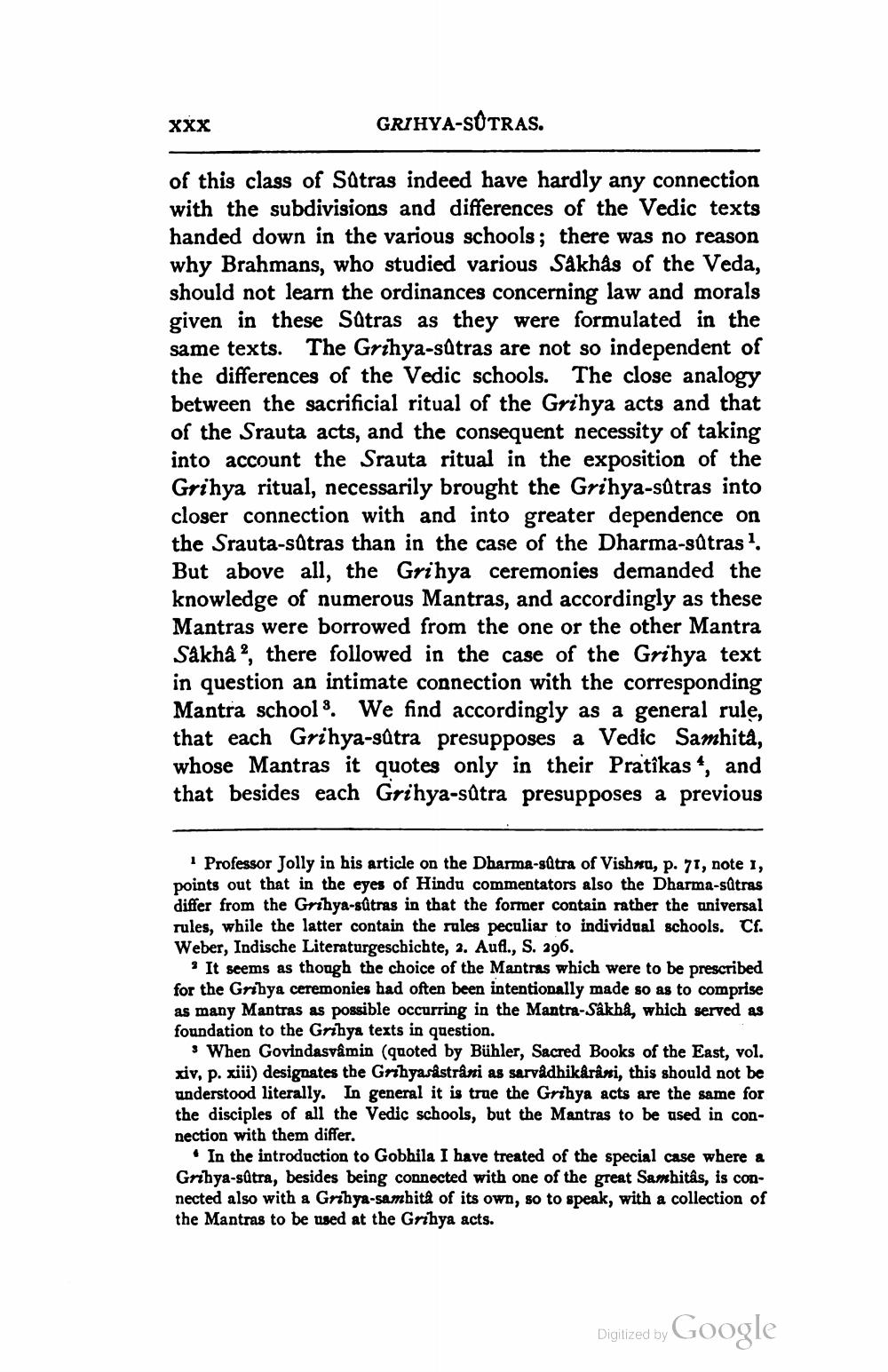________________
XXX
GRIHYA-SOTRAS.
of this class of Satras indeed have hardly any connection with the subdivisions and differences of the Vedic texts handed down in the various schools; there was no reason why Brahmans, who studied various Sakhâs of the Veda, should not learn the ordinances concerning law and morals given in these Satras as they were formulated in the same texts. The Grihya-sūtras are not so independent of the differences of the Vedic schools. The close analogy between the sacrificial ritual of the Grihya acts and that of the Srauta acts, and the consequent necessity of taking into account the Srauta ritual in the exposition of the Grihya ritual, necessarily brought the Grihya-sūtras into closer connection with and into greater dependence on the Srauta-sutras than in the case of the Dharma-sutras 1. But above all, the Grihya ceremonies demanded the knowledge of numerous Mantras, and accordingly as these Mantras were borrowed from the one or the other Mantra Såkha, there followed in the case of the Grihya text in question an intimate connection with the corresponding Mantra schools. We find accordingly as a general rule, that each Grihya-sútra presupposes a Vedic Samhita, whose Mantras it quotes only in their Pratîkas“, and that besides each Grihya-sútra presupposes a previous
1 Professor Jolly in his article on the Dharma-sutra of Vishnu, p. 71, note 1, points out that in the eyes of Hindu commentators also the Dharma-stras differ from the Grihya-sútras in that the former contain rather the aniversal rules, while the latter contain the rules peculiar to individual schools. Cf. Weber, Indische Literaturgeschichte, 2. Aufl., S. 296.
? It seems as though the choice of the Mantras which were to be prescribed for the Gribya ceremonies had often been intentionally made so as to comprise as many Mantras as possible occurring in the Mantra-Sakha, which served as foundation to the Grihya texts in question.
When Govindasvâmin (quoted by Bühler, Sacred Books of the East, vol. xiv, p. xiii) designates the Grihyasástrâni as sarvadhikårâni, this should not be understood literally. In general it is true the Grihya acts are the same for the disciples of all the Vedic schools, but the Mantras to be used in connection with them differ.
* In the introduction to Gobhila I have treated of the special case where & Grihya-sätra, besides being connected with one of the great Samhitas, is connected also with a Grihya-sambita of its own, so to speak, with a collection of the Mantras to be used at the Gribya acts.
Digilized by Google




